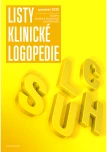DIAGNOSTIC PROCESS AND SUBSEQUENT CARE OF CHILDREN WITH EARLY-AGE HEARING IMPAIRMENT: PARENTS’ EXPERIENCE
Authors:
PhDr. Horáková Radka, Ph.D. 1,2; Mgr. Gábová Kristýna 3; prof. Ing. Mgr. Mgr. Tavel Peter Et, Ph.D. 3
Authors‘ workplace:
Audio Fon centr, s. r. o., Obilní trh 4, 602 00 Brno
1; Masarykova univerzita, Pedagogická fakulta, Katedra speciální a inkluzivní pedagogiky
2; Institut sociálního zdraví na UP v Olomouci (OUSHI), Univerzitní 22, 771 11 Olomouc (korespondenční adresa), sídlo: 1. máje 820/5, 779 00 Olomouc
3; Poříčí 9, 60 00 Brno
3
Published in:
Listy klinické logopedie 2020; 4(2): 84-91
Category:
Main topic
Overview
The article introduces the process of obtaining a diagnosis and hearing screening of young children in the Czech Republic. The subsequent care has been described as multidisciplinary, with its main goals being early intervention, initiation of functional communication with the child and providing the child with professional Speech Therapy training. The submitted text includes the qualitative research outcomes that analyse the experience of parents of children with hearing loss. These outcomes will be published on the website https://hovoryozdravi.cz/. The research has been carried out by the Olomouc University Social Health Institute and also forms part of the “Promoting the effective use of assistive devices by children with hearing impairments” project (financially supported by TA ČR). Within our research, 20 interviews with parents were selected for the purpose of this article, in which focused on the factors influencing the care and parenting at an early age from the parents’ perspective. In addition, topics are described that we found helpful in complementing the common clinical practice of Speech Therapy.
Keywords:
hearing impairment – child at an early age – hearing screening – speech therapy – qualitative research – parents’ experience
Sources
- BRAUN, V., CLARKE, V., 2006. Using thematic analysis in psychology. Qualitative Research in Psychology [online]. 3(2), e77-e101. [cit 10. 9. 2020]. DOI:10.1191/1478088706qp063oa. ISSN 1478-0887.
- CÍBOCHOVÁ, R., 2004. Psychomotorický vývoj dítěte v prvním roce života. Pediatrie propraxi. [online]. 7(6), e291-e297. [cit. 2. 9. DOI: 10.36290/ped.2020.060. ISSN 18035264. Dostupné z: https://www.pediatriepropraxi.cz/pdfs/ped/2004/06/07.pdf
- COLE, E., FLEXER, C., 2007. Children with hearing loss: Developing listening and talking. 2. vyd. San Diego: Plural Publishing, Inc. ISBN 978-1597563796.
- EXECUTIVE SUMMARY OF JOINT COMMITTEE ON INFANT HEARING YEAR 2007 POSITION STATEMENT Principles and Guidelines for Early Hearing Detection and Intervention Programs. Dostupné z: https://www.cdc.gov/ncbddd/hearingloss/documents/execsummfinal.pdf
- FITZPATRICK, E. M., DOUCET, S. P., 2013. Pediatric audiologic rehabilitation: from infancyto adolescence. 1. vyd. New York: Thieme Medical Publishers, Inc. ISBN 9781604066951.
- FORTNUM, H. M., SUMMERFIELD, A. Q., MARSHALL, D. H. & J. M. BAMFORD, 2001. Prevalence of permanent childhood hearing impairment in the United Kingdom and implications for universal neonatal hearing screening: Questionnaire based ascertainment study. BMJ (Clinical Research Ed.) [online]. 323(7312): e536-e540. [cit. 21. 9. 2020]. DOI: 10.1136/bmj.323.7312.536 Dostupné z: https://www.ncbi.nlm.nih.gov/pmc/articles/PMC48157/
- HOLMANOVÁ, J., 2002. Raná péče o dítě se sluchovým postižením. 1. vyd. Praha: Septima. ISBN: 978-80-7216-345-8.
- HORÁKOVÁ, R., 2012. Sluchové postižení – úvod do surdopedie. 1. vyd. Praha: Portál. ISBN 978-80-262-0084-0.
- HORÁKOVÁ, R., 2017. Sluchové vnímání dětí raného věku s postižením sluchu: funkční hodnocení. 1. vyd. Brno: Masarykova univerzita, 2017. ISBN 978-80-210-8130-7.
- KOMÍNEK, P., HAVLÍKOVÁ, E., POLÁČKOVÁ, R., ZELENÍK, K. a Z. KABELKA, 2012. Screening sluchu novorozenců – jaká je role dětských lékařů? Pediatrie pro praxi [online]. 13(5), e326-e328. [cit. 20. 9. 2020]. DOI: 10.36290/ped.2020.060. ISSN 1803-5264. Dostupné z: https://www.pediatriepropraxi.cz/pdfs/ped/2012/05/09.pdf
- KRAL, A., EGGERMONT, J. J., 2007. What‘s to lose and what‘s to learn: development under auditory deprivation, cochlear implants and limits of cortical plasticity. 2020].Brain Res Rev [online]. 56(1), e259-e269. [cit. 2. 9. 2020]. DOI: 10.1016/j.brainresrev.2007.07.021. ISSN 17950463. Dostupné z: https://www.ncbi.nlm.nih.gov/pubmed/17950463
- KROČANOVÁ, L., 2001. Sluchovo postihnuté dieťa v počujúcom rodinnom prostředí. Speciální pedagogika, 2, s. 91–95. ISSN 1211-2720.
- LEICHTOVÁ, B., 2015. Hodnocení sluchového vývoje u dětí s kochleárním implantátem v raném věku. Diplomová práce. Brno: Masarykova univerzita, Pedagogická fakulta, Katedra speciální pedagogiky. Vedoucí práce PhDr. Radka Horáková, Ph.D.
- LEONHARDT, A., 2001. Úvod do pedagogiky sluchovo postihnutých. 1. vyd. Bratislava: Sapientia. ISBN 80–967180-8-8.
- MITCHELL, R. E., KACHMER, M. A., 2004. Chasing the mythical ten percent: Parental hearing status of deaf and hard of hearing students in the United States. Sing Language Studies [online]. 4(2), e138-e168. [cit 12. 9. 2020]. DOI: 10.1353/sls.2004.0005.
- ROBERTSON, L., 2014. Literacy and deafness: listening and spoken language. 2. vyd. San Diego: Plural Publishing, Inc. ISBN 978-1597565578.
- SEEWALD, R., THARPE, A. M., 2011. Comprehensive handbook of pediatric audiology. 2. vyd. San Diego: Plural Publishing, Inc. ISBN 978-1597566155.
- ŠKODOVÁ, E., JEDLIČKA, I. et al., 2007. Klinická logopedie. 2. vyd. Praha: Portál. ISBN: 978-80-7367-340-6.
- TAVEL, P. et al., 2015. Metodika DIPEx ČR. Olomouc: Certifikovaná metodika MPSV, č.j. 2015/70065-312.
- VÁGNEROVÁ, M., 2004. Psychopatologie pro pomáhající profese. 4. vyd. Praha: Portál. ISBN: 80-7178-802-3.
- WATKIN, P. M., BALDWIN, M., 2011. Identifying deafness in early childhood: Requirements after the newborn hearing screen. Archives of Disease inf Childhood [online]. 96(1), e62-e66. [cit 12. 9. 2020]. DOI: 10.1136/adc.2010.185819. ISSN: 21047829.
- ZELENÍK, K. et al., 2015. Těžká oboustranná nedoslýchavost u dítěte s výbavnými otoakustickými emisemi. Pediatrie pro praxi [online]. 16(2), e121-e123 [cit. 2. 9. 2020]. DOI: 10.36290/ped.2020.060. ISSN 1803-5264. Dostupné z: https://www.pediatriepropraxi.cz/pdfs/ped/2015/02/13.pdf
- ZIEBLAND, S., MCPHERSON, A., 2006. Making sense of qualitative data analysis: an introduction with illustrations from DIPEx (personal experiences of health and illness). Medical Education [online]. 40(5), e405-e414. [cit 10. 9. 2020]. DOI:10.1111/j.1365-2929.2006.02467.x. ISSN 0308-0110.
Labels
Clinical speech therapy General practitioner for children and adolescentsArticle was published in
Clinical speech therapy (Listy klinické logopedie)

2020 Issue 2
Most read in this issue
- CASE STUDY OF BOY WITH SUBMUCOSAL CLEFT PALATE, DEVELOPMENTAL DYSPHASIA AND EATING DISORDER
- PHONEME AWARENESS, READING AND EARLY INTERVENTION IN CHILDREN WITH HEARING IMPAIRMENTS
- DIAGNOSTICS OF NARRATIVE ABILITIES AND CZECH ADAPTATION OF THE MAIN TOOL
- HEARING EXAMINATION WITH METHODS OF EVOKED POTENTIALS AND ITS LIMITATIONS IN THE YOUNGEST CHILDREN
